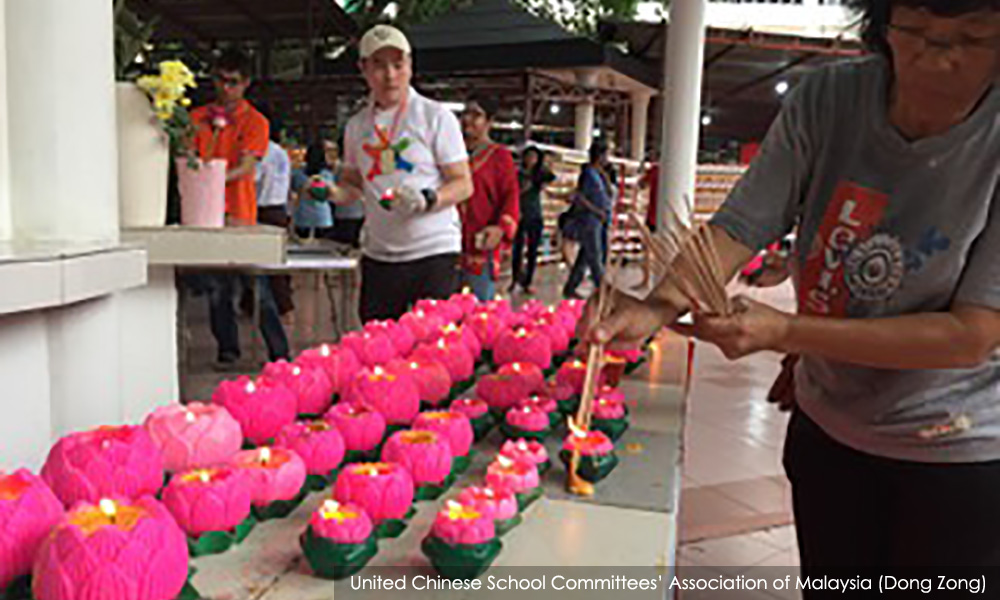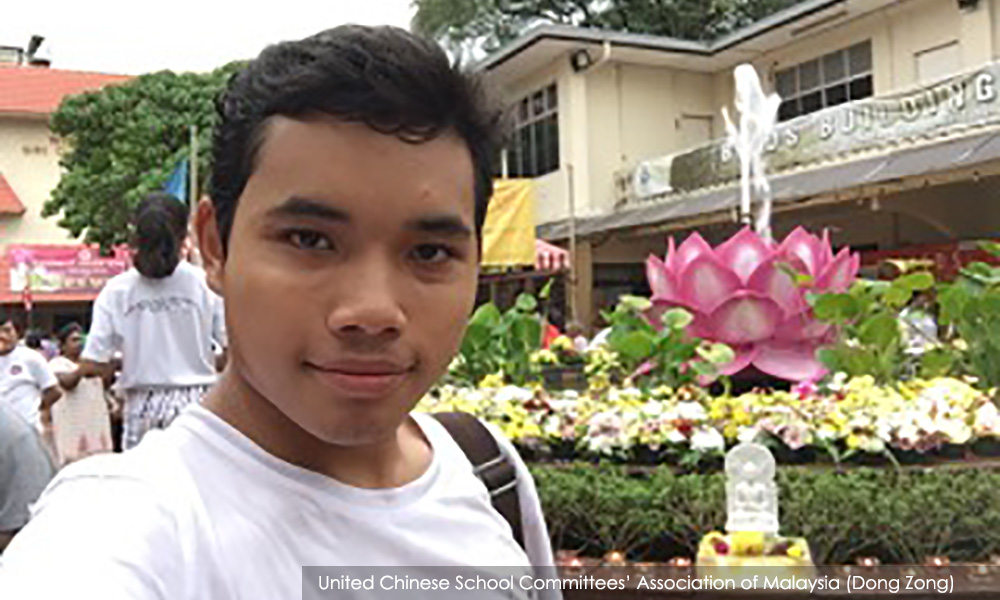COMMENT | It was a windy day. The leaves were swooped away by the winds from their previous place under the shade of trees to scatter along the roads in Brickfields.
The sun is hiding its body and its rays behind those slow-moving cumulonimbi. If it wasn’t because of the long meeting that should have adjourned by noon, I’d be at home, had my shower, and probably in front of the TV watching K-dramas. But it wasn’t the case.
I came out of the office at 5pm and was ready to go back home before I had a glimpse of something big happening on the street. There was some kind of smell that punched me on the nose. Then I remembered it was the Wesak Day Eve and, thus, the lights and the hubbub that came from afar should be the Wesak procession.
Living in Seri Kembangan – the biggest Chinese new village in Selangor by size – Wesak procession is not a strange thing to witness every year-round. Our main road will be closed to allow the colourful floats to make its way from the temple to the main town where our multipurpose hall and morning market are located. But I never in my life went near to see what those people did while they were marching by the extravagant floats.
Thinking that I had a lot of time still to spend before my last train to catch to go back home, I decided to have a look at the procession.
Along the whole stretch of Jalan Berhala, there were full of people and fancy lorries carrying Buddhist paraphernalia on their backs. They were preparing for the procession to begin, touching up here and there as it was still early. I was told by one of the attendees that the parade would start at 7pm.

The street was full of gaiety and merrymaking. Children were running past each float to the other, lights on the lorries gave its shine one by one – giving the Gautama Buddha statue a gleam that we don’t usually see on normal days.
In fact, Jalan Berhala itself is an interesting road to start with. A melting pot of different religions, showing evidence that interreligious peace can exist – it has a Buddhist temple, a Hindu temple, a church, and a mosque all packed in that one stretch of road.
I walked further and entered the temple where all the activities had gone into full swing. There were different booths for everything. I tried to visit them one by one. The temple is called Buddhist Maha Vihara. Surprisingly, I found the temple not as scary as some other shady ones.
The colour of the building especially attracted my eyes, looking at the orange pagoda roofs, white walls, and red gate. The smell of the joss sticks on the other hand was less strong inside the temple compound, surprisingly. There were volunteers distributing food and bottled drinks.
In the hall, I saw nurses – some donning the headscarves – helping the participants who were interested to donate blood. There was a stall selling vegetarian packed airtight food and the aunties started to explain to me about the importance of going vegetarian.
I just shook my head showing acknowledgement and moved to the next booth. It’s a booth selling all sorts of Buddhist religious books and praying items – from rosary beads to some kind of orange cloth that I normally see monks wear. Most of the books were free, for those who want to know more or who are new to Buddhism.

I moved to the next one, a wishing tree. Over there, the volunteers greeted me gleefully and gave me a paper that was cut into the shape of a leaf and a coloured marker. I wrote my wish for that year on the small piece of paper, tied it with a string, and later tied the string to the branches that are out of the foliage. People hang them on the tree hoping that their wishes will come true.
The volunteers were very amiable and helpful even though I was equipped with a map at the entrance. Since the place was humongous and crowds thronged into the temple non-stop, I could be lost at times.
One middle-aged volunteer from the temple helped to show me other things around the temple when she learnt that I wasn’t a Buddhist. She revealed the Bodhi tree – well, what I learnt in the History books, it’s the place where Buddha meditated and was enlightened – and manifested how they paid respect to Buddha by lighting up the pink lotus lamp.
The interesting part was, even if they don’t know you, everyone would wish you “Happy Wesak Day, sadhu, sadhu, sadhu.” Until now, I wonder what sadhu means. I assume that it probably means "peace" like salam in Arabic.
Before making my way back home, the volunteer gave me a yellow string and helped me to tie it on my left arm. It was said that the string would discard evil from coming.
Though the string is now lost somewhere in the years following that event, I would never forget the kindness of the people and the excitement for the visitors there – the spectacle of floats which showcased the flowers, fountains and the surrounding lights as the sun drew near the horizon, setting for the day.
Truly, there is no place in the world we can celebrate all these amazing celebrations even if we come from a different background, except in Malaysia. People might say the grass is always greener on the other side but really, there is no place like home.
Editor's Note: This is an entry to an essay competition organised by the United Chinese School Committees’ Association of Malaysia (Dong Zong).
The writer is a private university student.
The views expressed here are those of the author/contributor and do not necessarily represent the views of Malaysiakini.

